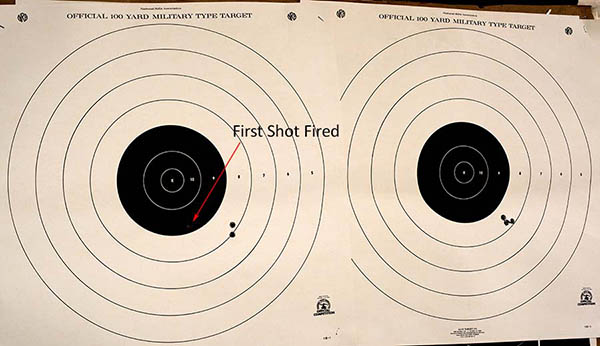Here’s a quick update on the .375 H&H that I promised a few posts ago. In that post, I mentioned that I had been shooting the Remington Model 700 Safari Grade at 50 yards for my load development work, and I mentioned that I wanted to try it at 100 yards.

I did, and the bottom line is that I shot the tightest groups I’ve ever shot at 100 yards using iron sights (i.e., not a scope). Take a look.

My point of aim was at 6:00 on the bullseye, and the groups I shot were worthy of a scoped rifle. I may need to adjust the rear sight to bring the group over to the left a couple of inches or so (which is a bit funny, because at 50 yards the windage seemed perfect). The elevation is perfect; the point of impact is even with the point of aim for elevation. When I shot those groups it was overcast, and that could account for the rifle printing a bit to the right. Our range is aligned such that in the morning the sun is to the left, and that makes the left side of the front site a bit brighter than the right side. Because it was overcast the day I shot the target you see above, the sunlight-induced bias wasn’t present. That could account for the groups offset to the right. I’ll wait and shoot it again when the sun’s out to see where the rifle hits.
I am enjoying this rifle more and more. It’s got it all…good looks, power, and it groups like a target grade rifle.
Check out our other Tales of the Gun stories!
Hit those popup ads!
Never miss an ExNotes blog:


I see that this stuff can get a bit technical. Sounds interesting.